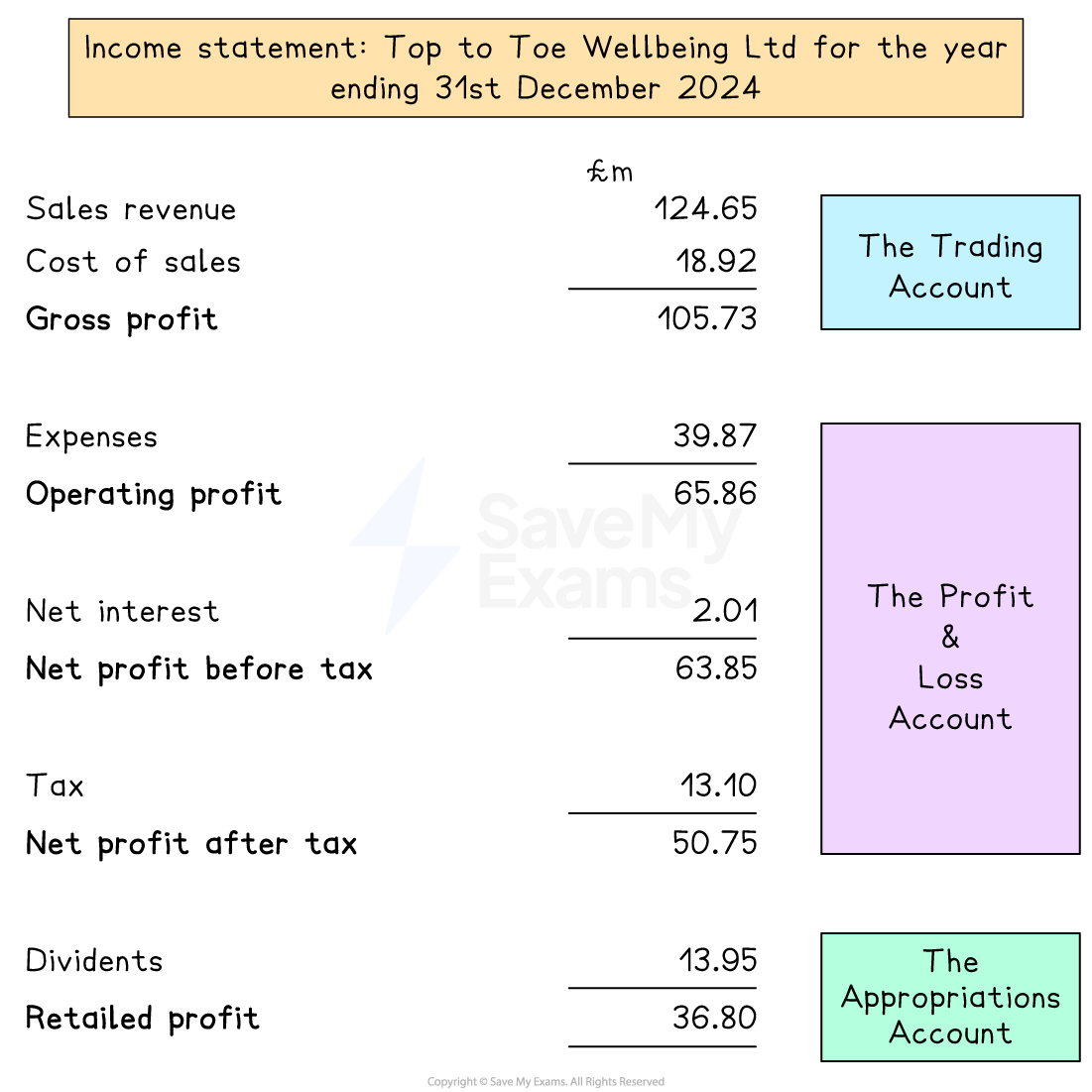The Income Statement (AQA A Level Business): Revision Note
Exam code: 7132
An introduction to the income statement
The income statement tracks a business's revenue, expenses, profit or loss (see Analysing Profitability) during a set period, usually a year
Stakeholder interest in the income statement
Stakeholder | Interest |
|---|---|
Shareholders |
|
Employees |
|
Managers and directors |
|
Suppliers |
|
Government |
|
Local community |
|
The structure of the income statement
The income statement is divided into three parts
The trading account
The profit and loss account
The appropriation account
An example income statement

The trading account
The trading account is where the cost of sales is deducted from sales revenue to calculate the gross profit
In 2024 Top to Toe Wellbeing Limited's sales revenue was £124.65m and its cost of sales were £18.92m
The gross profit for the period was therefore
The profit and loss account
The profit and loss account deducts a series of expenses to determine the operating profit for the period
In 2024 gross profit was £105.73m and expenses were £39.87m
The operating profit was therefore
The business also paid £2.01m interest
The profit before tax was therefore
The business also paid £13.10m tax
The profit after tax for the period was therefore
The appropriations account
The appropriations account shows how profits are distributed for the period
In 2024 Head to Toe Wellbeing Limited distributed £13.95m to shareholders as dividends
£36.80m was therefore retained as profit
Notes to the accounts
Public limited companies are required by law to include details of
Depreciation of non-current assets
Directors' earnings
Audit details, including the identity and costs of the appointed auditor
Employee details, such as the size of the workforce, wage and salary costs, pension liabilities and national insurance contributions
Extraordinary items, which are significant one-off items of income or expenditure that are unlikely to be repeated, such as the relocation of a head office
Exceptional items, which are significant one-off items of income or expenditure that are unusual but a part of normal trading activities, such as a very large order placed by a customer
Profit quality
Profit quality measures how reliable and sustainable a company’s reported profit really is
It considers whether profit comes from normal, cash-generating activities or from one-off, non-cash or unreliable sources
High-quality profit | Poor-quality profit |
|---|---|
|
|

Unlock more, it's free!
Did this page help you?